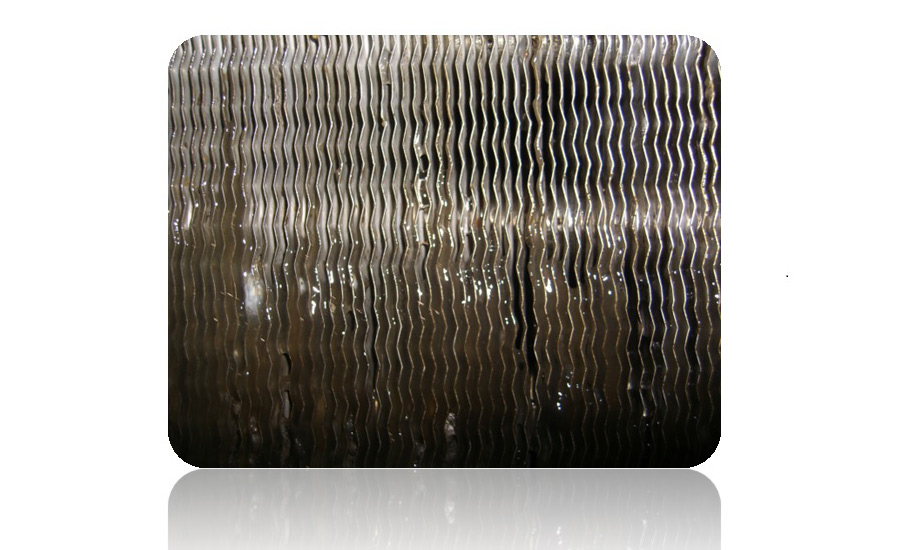We have heard about “Sick Building Syndrome” (SBS), a condition in which people develop symptoms of illness or become infected from the building in which they work or reside. There is also something called “Monday Syndrome,” which refers to fatigue, dizziness, chest tightness, abdominal distension, loss of appetite, body ache, inattention, and other symptoms often experienced on a Monday. Although the latter is often attributed to psychological factors, the reality is that poor IAQ can actually cause most of those symptoms.
When we talk about IAQ, we refer to the air inside, which includes pollutants from indoor combustion, radon, carbon monoxide, volatile organic compounds (VOCs), asbestos fibers, carbon dioxide, ozone, and particulates — most of which we have monitoring systems for. All these particulate compounds are one very important component that make up the air we breathe and are considered an integral share of IAQ. However, what is sometimes forgotten, is that there are other more lethal microbial components to the air we breathe that we don’t consider when looking for IAQ solutions. These airborne, microbial, “living” contaminants are not so easy to eliminate, and confirming their presence in the indoor air we breathe isn’t always straightforward either. These microorganisms, mostly mold, bacteria, and viruses, are not only actively present in HVAC systems, but they also reside, continue to grow, and reproduce in this equipment, intensifying the problem exponentially.
A mold colony can grow on a moisture-laden surface within 24 to 48 hours. Since mold is a microscopic organism, its presence isn’t visible until the mycelium is formed. Spores will typically germinate and colonize in three to 12 days and become visible in 18 to 21 days.
This mold forms a sticky layer on the surface of the a/c cooling coil that adheres to the coil’s aluminum fins and, at the same time, it traps bacteria and particles that try to pass through the coil and haven’t been caught by the pre-filter. This compound of mold, bacteria, and particles is commonly known as biofilm, and it forms an isolation layer of living organisms on the face of the coil fins with multiple side effects.

Photos courtesy of Universal UV Solutions

The layer of biofilm gets thicker as the mold and bacteria continue to multiply. This has two negative effects on the efficient operation of the a/c system and a huge knock-on effect on the quality of the air coming from the coil. A buildup of back pressure is caused due to a smaller gap between the fins — not as much air through the coil as it was designed for. The second thing we will see is that this insulating layer around the coil fins is greatly reducing the coil efficiency and not allowing successful heat transfer, so the actual air that manages to get through is not as cool or as dry as it should be. The quality of the air is impacted because you not only have the natural load of microorganisms that would be there normally, but you now also have an added component made up of the biofilm that is breaking off the coil itself getting in the airstream and posing a serious hazard to our health.
Addressing the issues related to IAQ, looking at the HVAC systems, much has been said about ventilation and filtering, both important issues to consider, however little has been said about effective, total coil, drain pan, air duct cleaning, and air disinfection. There are several solutions that address the issue of reducing microbial count in the air, Photocatalytic oxidation and ionization are two good examples that tackle the issue of airborne contaminants; however, it’s an ultraviolet germicidal solution that will most effectively tackle the problem at source — the accumulation of biofilm on the coil. The ultraviolet germicidal solution based on the use of very high-intensity ultraviolet C-band lamps placed close to the cooling coil offers a very effective coil cleaning and airborne microbial reduction solution. This technology is easy to implement, efficient, and cost-effective. The UVC light attacks and deactivates the DNA of microorganisms like mold, and bacteria, disrupting their ability to multiply and feed, effectively killing them. This process happens on the face and interior of the coils so effectively that airflow and thermal transfer are mostly returned to manufacturer specification (assuming no serious physical damage to the coil). This gives the a/c system a new lease on life.
These lamp systems are not a replacement for any filters. They do, however, complement the downstream filtering systems by deactivating microorganisms in the air stream, thus reducing the number of harmful contaminants that reach the filter.
This complement of good filtering and UVC lamps definitely helps to improve the IAQ of any area being conditioned by these systems.
When trying to improve IAQ, increase equipment efficiency, reduce operational costs, and make the treated area safer, UVC technology solutions should be considered.





